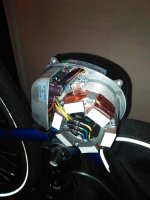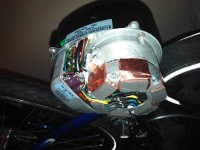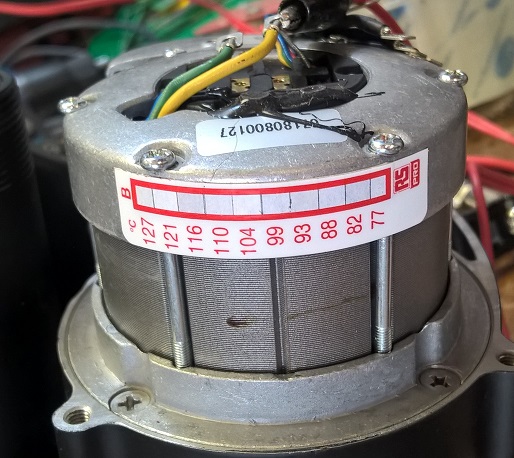Elinx said:We are not talking about chips with nano dimensions for the electronical parts into the chip, but about a relative big laminated iron core.sysrq said:...............
So there might be insufficient heat transfer capacity below 1mm thickness?
https://www.electronicdesign.com/circuit-protection/pyrolytic-graphite-sheet-evolves-meet-tough-thermal-demands
Cooling only front part of the motor itself could create internal hotspots.
The sheets you are talking about are so thin for the best contact with the aluminium heatsinck above a chip. The conductivity is higher than grease or glue, that is what they mean with preventing hotspots.
Als for 1mm you need 60 layers of these sheets. Between every layer you got conductivity loss.
The iron core can conduct the heat relative easy, but the air gap is not, so the heat stays in the motorcasing.
So fill the air gap with copper or aluminium is the easiest way.
Motors are known to have internal hotpots.
The plan was to use some compressible 5-6mm adhesive pads to reach and align with the circular part of the cover above the terminals before attatching adhesive PGS strips on top of it extending from a laminated core for more direct heat flow.
It can be hard to get sufficient pressure on to the copper and aluminium plates to eleminate all the possible gaps while taking into account different expansion rates between the steel laminated core and copper or aluminium. Copper and aluminium also might require application of thermal paste which may dry out or migrate.
Copper sponge might not have enough sufficient direct surface area due to uncertainty of distribution of different strands.
Theoretically thick flexible OFHC copper foil could be used instead of the PGS, that would require thermal epoxy which can loose its integrity below zero degrees Celsius or thermal pads which require even pressure around the motor.




